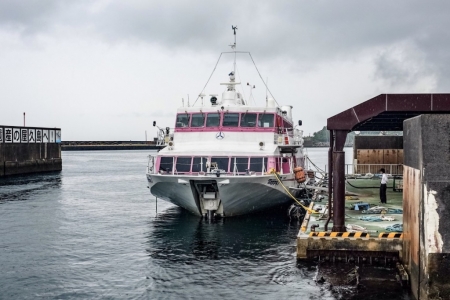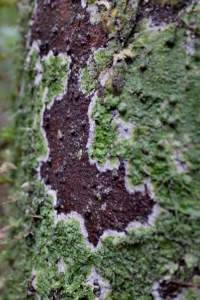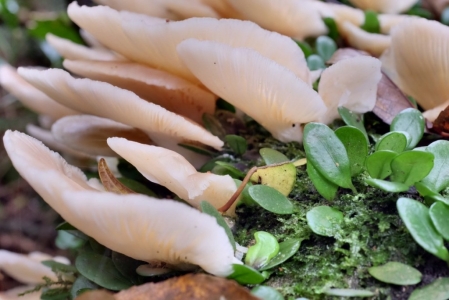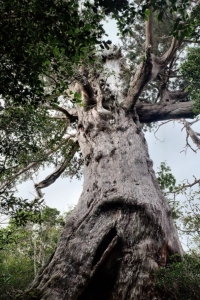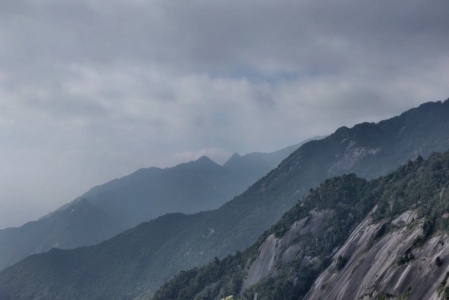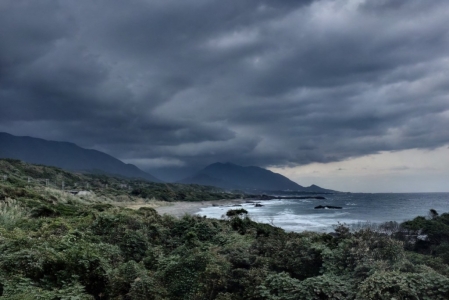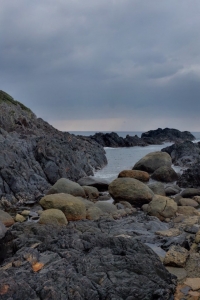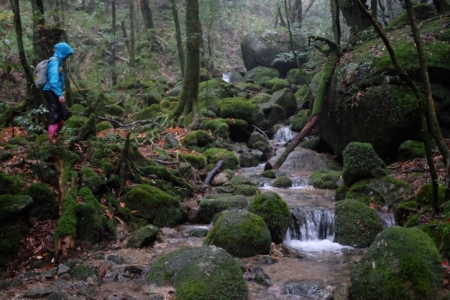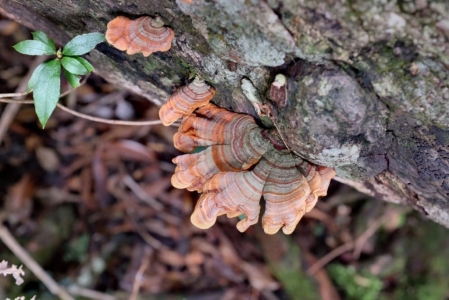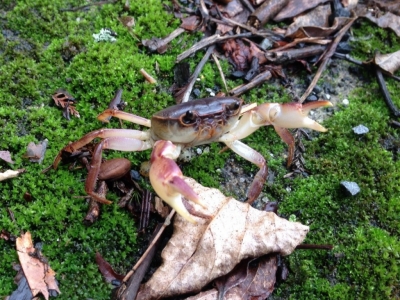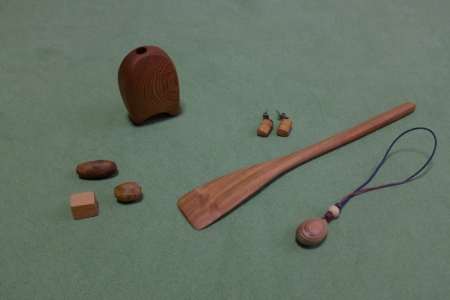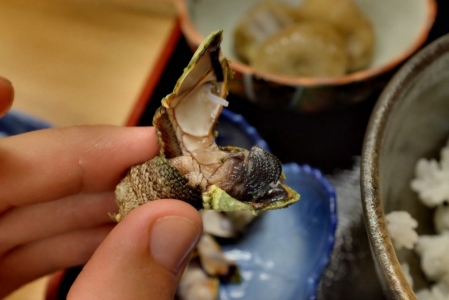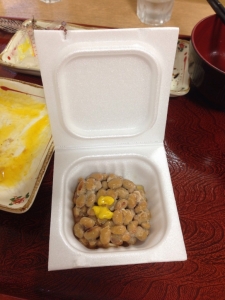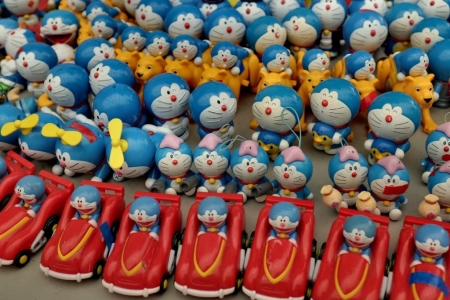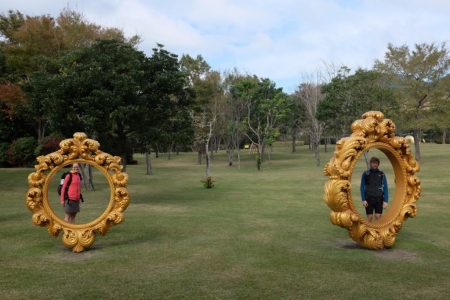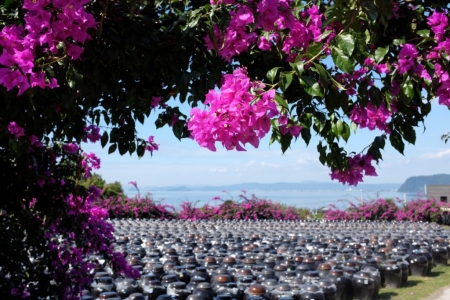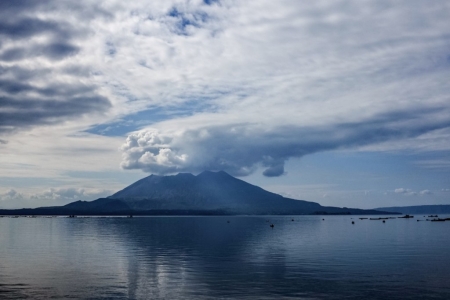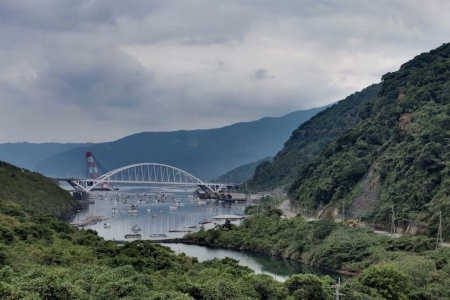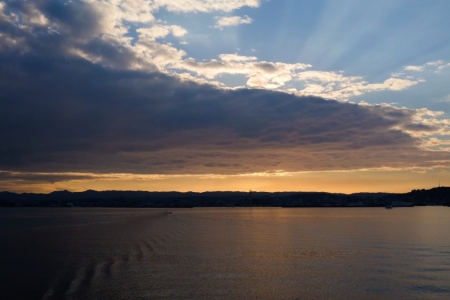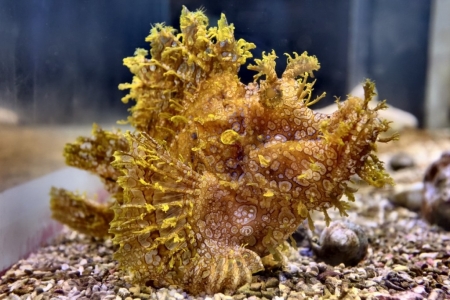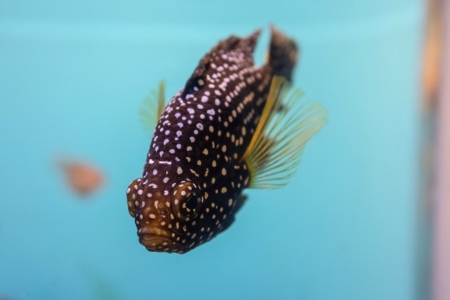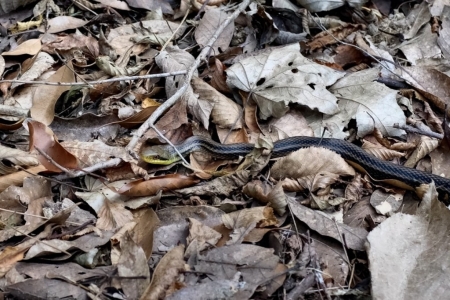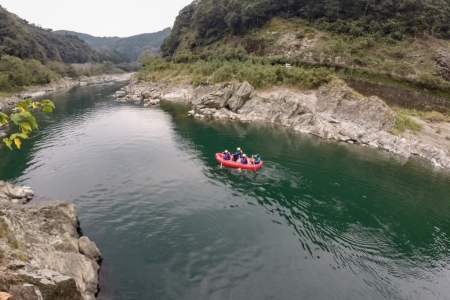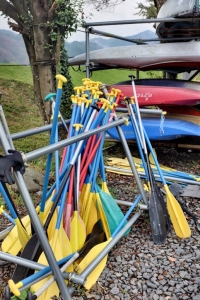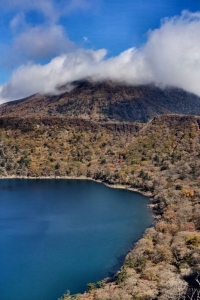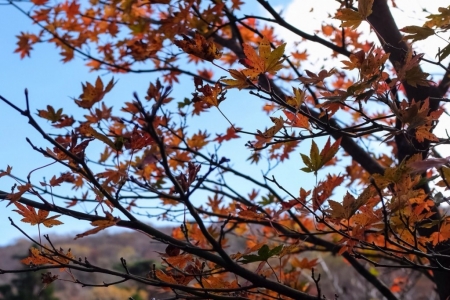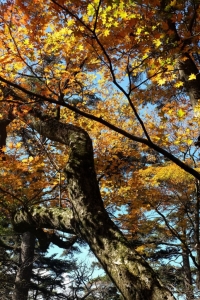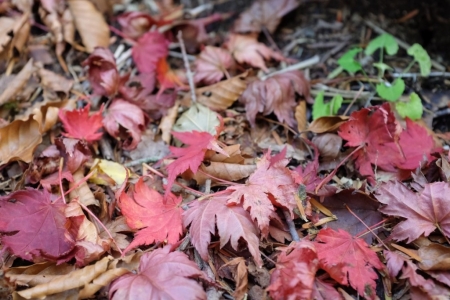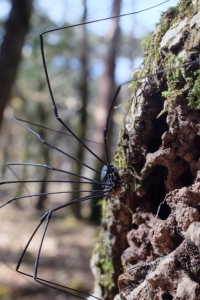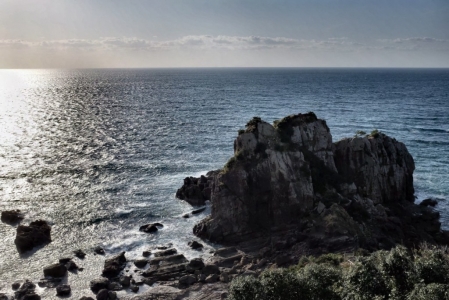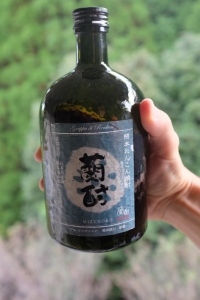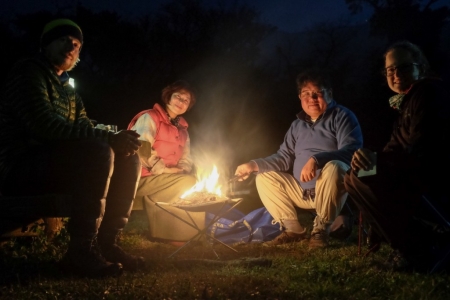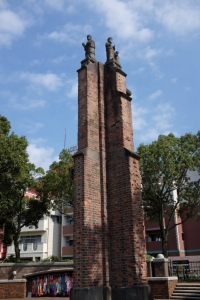After some back and forth we decided to visit the Yakushima island. After Tokyo this was one of the most recommended places. The preparations for the passage however were cumbersome. The bikes needed to be wrapped up so that we could take them along the Hydrofoil Ferry. Prepared with large rubbish bags and ducttape we went to work and after 20 minutes the bikes were packed.
The circular island is one of the most rain-laden places of whole Japan. This proved to be true during our visit. However this was not preventing us to see the UNESCO world-heritage rain-forest with the famous Yaku-sugi (over 1000 year old cedars).
Monthly Archives: November 2015
Kirishima Onsen – Kagoshima (E)
The end of our journey is getting closer every day. On our route to Kagoshima we stopped at the Kirishima Open-Air Museum. Besides the Open-Air installations, we were interested to see a special exhibition from Hiroshi Fuji. His work “Where have all these toys come from” with countless and colorful toys is simple but intriguing. We continued further south towards the sea. The route lead along the Kagoshima Bay, which is famous for Kurozu, a black rice vinegar. The ancient manufacturing process is quite complicated (we also learned the first-time about Koji). The vinegar is aging in black ceramic jars neatly arranged outdoors and exposed to weather. The fermentation takes more than a year, and the vinegar develops a mild taste thanks to the care of the masters. We continued pedalling and arrived at the impressive Sakurajima volcano, from where we took the ferry to Kagoshima.
Kirishima Geopark (E)
On our way to the Kirishima mountains (part of Kirishima Geopark) we made a stopover at Hitoyoshi to enjoy a river-rafting with “Land Earth”. Dried and well rested we had to gain some elevation the next day. After more than 1000 vertical meters we arrived at Ebino-Kōgen. We stayed in nearby Kirishima Onsen where we enjoyed the Onsen and the delicious food. From there we made an easy hiking tour around the Ōnomi caldera-lake the next day .
Amakusa (E)
We crossed over to the Amakusa Islands by ferry, beeing the only passengers aboard. Arriving in the harbour of Tomioka, we strangely found ourselves and our lunch in defense against a huge bird (most likely a Black-eared Kite). Afterwards we drove along the western coastline, boasting many nice sunset viewing spots. We set up camp at one of them and enjoyed the scenery of the sinking sun.
The next day we continued through the island’s inwards and smaller islands back to the mainland of Kyūshū. On our road south, we were stopped by a warm-hearted car driving lady, talking without interruption in japanese, expressing her joice to see us again. We couldn’t understand much but that we must have crossed each other a few times on the road since Amakusa. To our surprise we were gifted with a huge bottle of Shōchū, an ubiquitous and regionally varied japanese liquor. Amazing! Just try to imagine a surprising encounter like this in Switzerland ☺.
Nagasaki (E)
Our journey lead from Aso-san to Kumamoto, from where we crossed over to Shimabara peninsula by ferry. At Unzen-dake campsite we met Kaoru-san and Fumiko-san from Nagasaki which invited us over for a beer at their campfire. An invite which we gladly accepted after the demanding ascent.
The next day we headed to Nagasaki. Like Hiroshima, the events of 1945 are still dominantly present in many visitor’s mind. Too bad, since Nagasaki formerly made history as a major trade port between Japan and Europe. Nowadays, the city continues to be attractive in many ways. Besides the memorial sites of the nuclear bombing we visited Dejima, a man-made island which deemed as the only trading post with westeners during Japan’s isolation.
The visit to the former Mitsubishi coal-mining island – “battleship-island”, Hashima, was partially cancelled. Torrential rain and the rough sea made landing impossible, therefore we just had a hasty glance on the ruins of Hashima from afar.
However, we will remember Nagasaki very well for two other reasons. First of all we run into a awesome bakery selling swiss bread and Engadiner Nut-cake☺. Secondly, even better was the repairing of Phils solar-battery charger. For that we were in need of a soldering tool, and since Kaoru-san had one, we were invited to dinner at Fumiko-san’s house. With the help of Kaoru-san, which spare no efforts and even went to buy a needed cable, we could repair the charger and enjoyed a wonderful evening with a delicious dinner. Truely unforgettable!!



